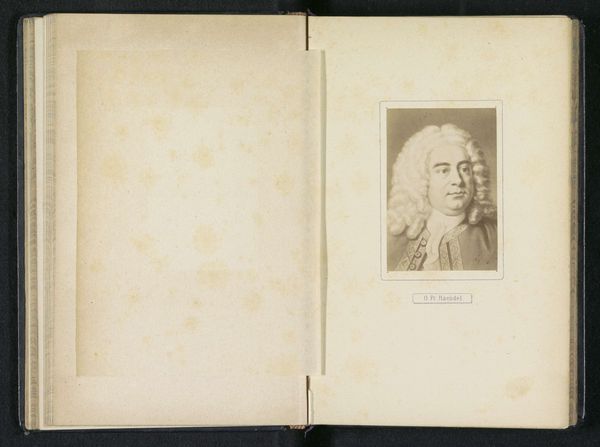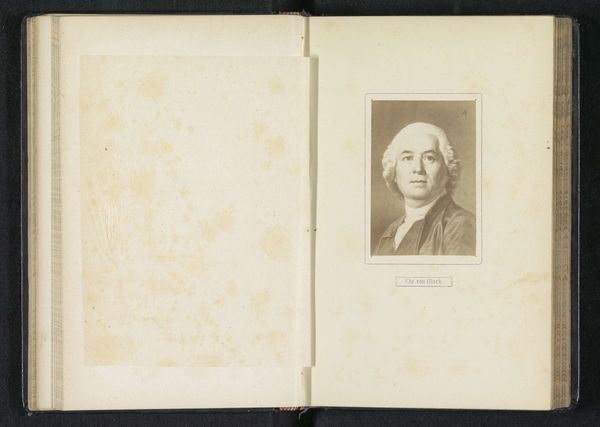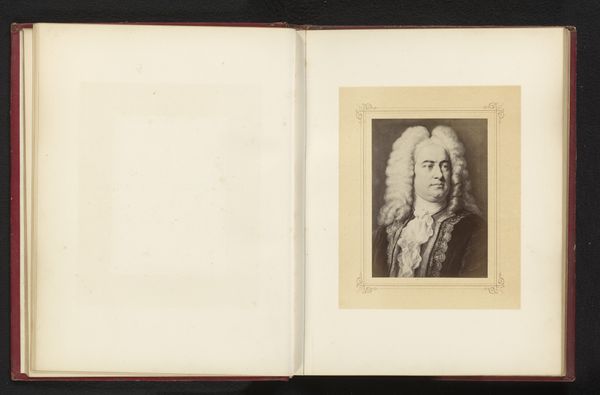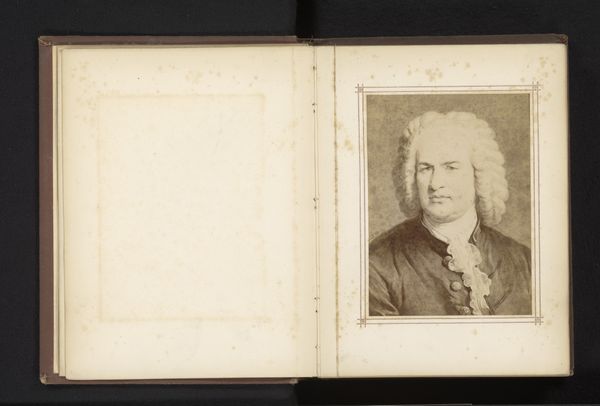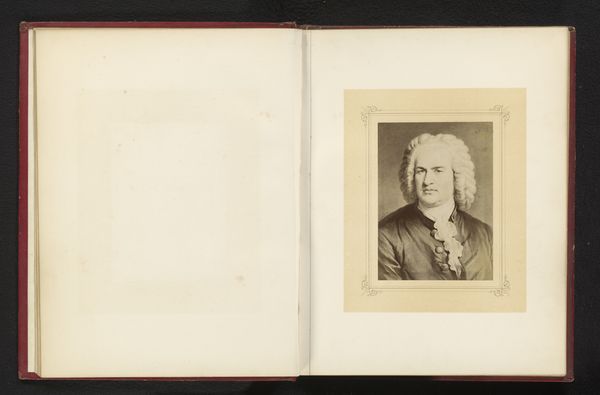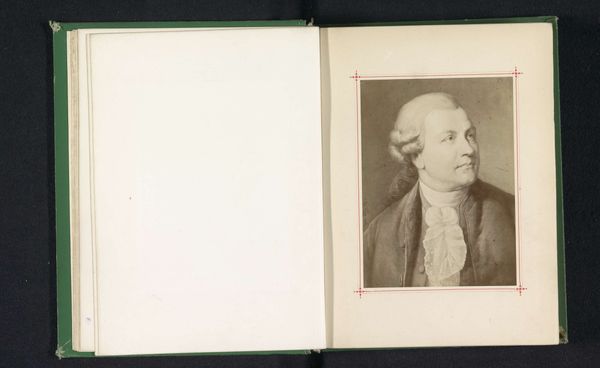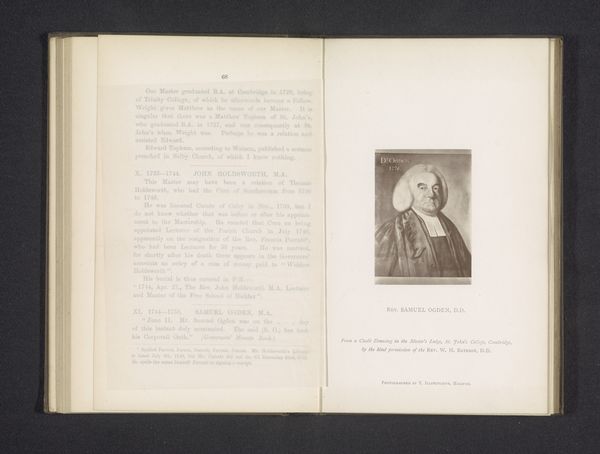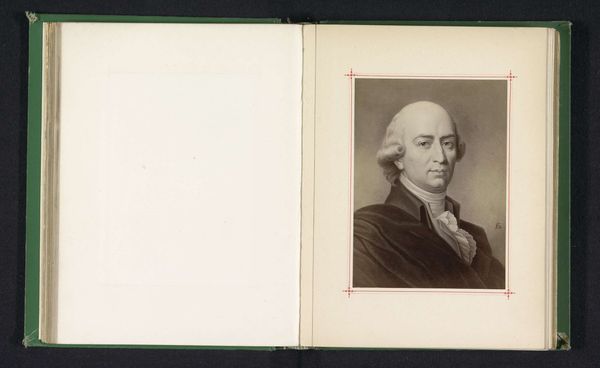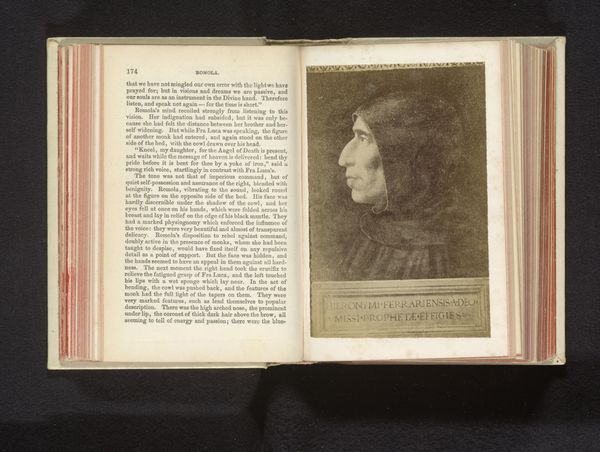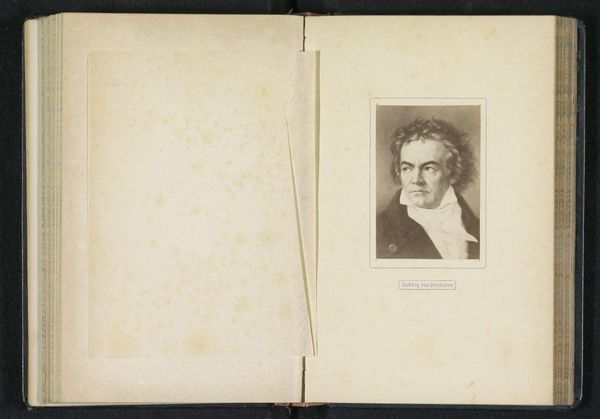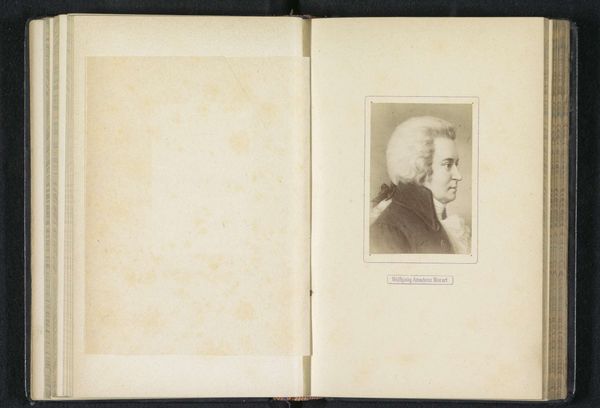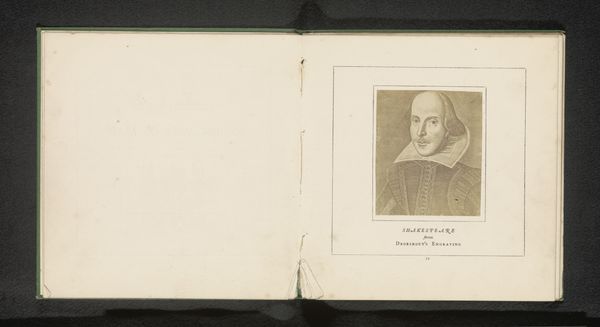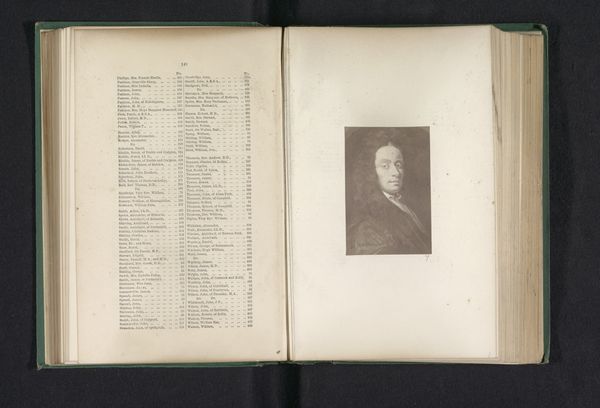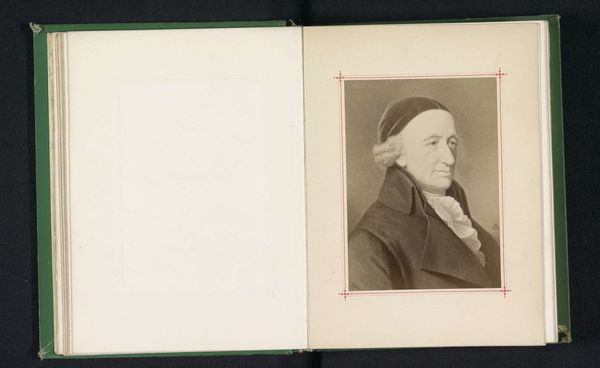
Dimensions: height 83 mm, width 57 mm
Copyright: Rijks Museum: Open Domain
Curator: Before us we have a photo reproduction of a portrait of Johann Sebastian Bach. Though the original image’s creator is anonymous, we can safely say that this piece dates back to before 1876. It presents as a print and also utilizes photography in its creation. What is your first reaction? Editor: It strikes me as quite modest in its materiality. The subdued tones of the photograph paired with what appears to be a somewhat aged paper suggests a world of labor and craftsmanship, very much distinct from how we conceive classical composers today. Curator: Precisely! This photograph enters a dialogue with how Baroque portraiture, of which Bach was a product, traditionally presented power and status through lavish displays. This reproduction reframes the narrative. It becomes more about accessibility, doesn't it? Consider how the portrait medium intersects with ideas about legacy and access to culture. The mass reproduction democratizes his image. Editor: But mass production also means commodification, right? This print allows us to bring Bach home, so to speak. To possess his image raises questions about our consumption of cultural figures. The means of its production matter! How many hands were involved in creating this photographic print and what were their stories? Curator: Absolutely. The print and photography work within the cultural technology of reproduction, opening questions about cultural identity in 19th-century Europe. How does this reproduction serve German national identity? Consider how, even today, cultural giants like Bach are weaponized to build political rhetoric around the definition of ‘German-ness’ or ‘Western civilization’ or its place on a world stage. Editor: Right, right. Plus, photography, as a developing medium, carried its own class implications. The accessibility and the labor—were these photographs aimed towards educational institutions or for home consumption for the rising bourgeoisie class to learn? Curator: And how that affects who can claim a stake in Bach’s legacy. By considering materiality, and situating this portrait in the historical-political and socio-cultural context, we engage in crucial questions concerning historical access, identity and cultural significance. Editor: Investigating materials shifts our understanding from the exceptional genius to the broader field of social practice. Hopefully the museum goer is keen to keep this expanded definition in mind. Curator: Precisely; perhaps, by recognizing all these social practices at play, the museum-goer leaves the space ready to engage in conversations that amplify complex narratives of identity!
Comments
No comments
Be the first to comment and join the conversation on the ultimate creative platform.
